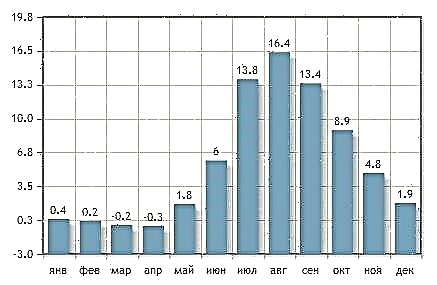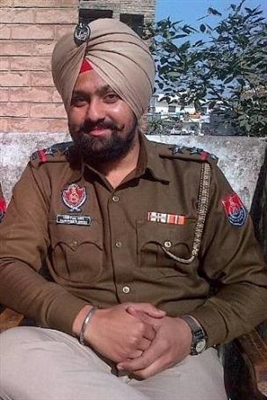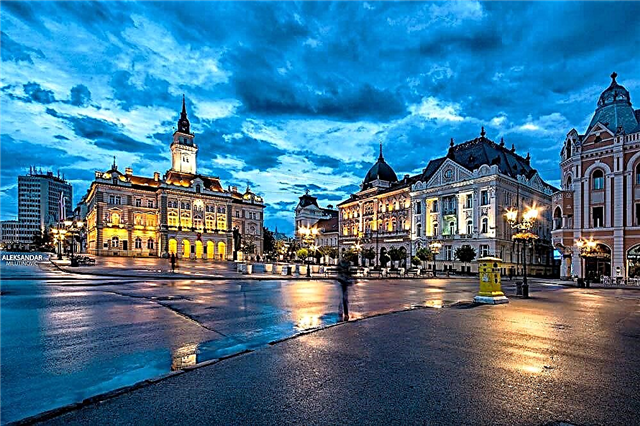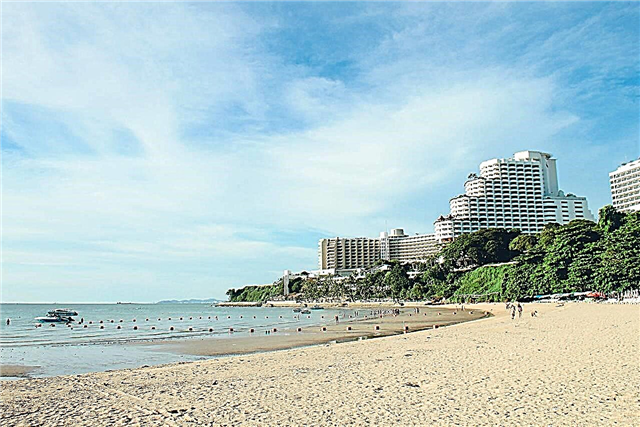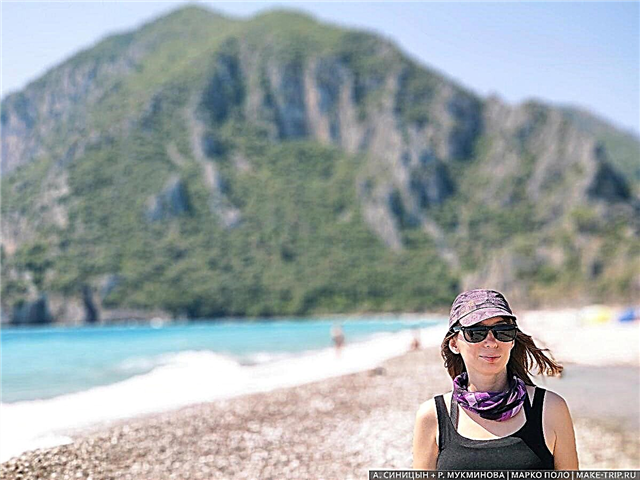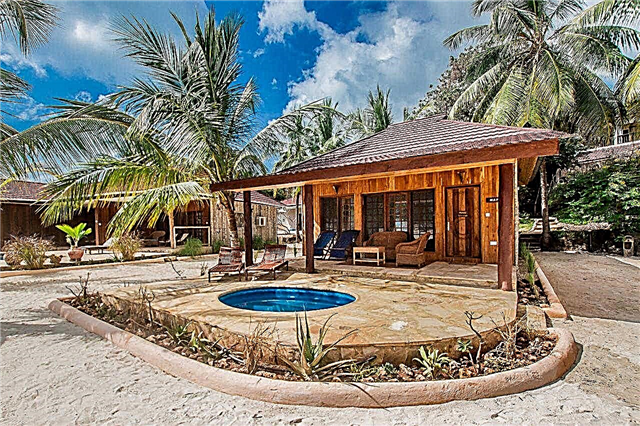The landmark of Milan museums is national art. Their legacy is immortalized in dozens of galleries and museums. Around Leonardo da Vinci, a whole cult has been created in a good way. The country's largest collection of science and technology exhibits bears his name, and even the vineyard once planted by the artist also has a museum.
The authorities willingly donate abandoned enterprises and religious objects for expositions. Patrons put them in order and create new cultural spaces. So it was with "Silos" - the Armani Museum, and earlier - with the Museum of Francesco Messina. Architectural monuments are not empty either: collections receive the spaces they need, and buildings that are significant for the city are kept in perfect condition.
The most interesting and popular museums in Milan
Gallery of contemporary art
An important point on the tourist map of travelers. One of the most visited museums in the city is occupied by an architectural monument of the 18th century - the Royal Villa. In addition to paintings by Manet, Picasso, Van Gogh, Renoir and dozens of classics of painting of different directions, the gallery presents rare furniture, sculptures, carpets and fabrics. You can walk through the halls accompanied by a guide, an audio guide, or on your own.
Address: Via Palestro, 16, Milan
Site: gam-milano.com

Sforza castle
The history of the palace begins in the XIV century. Since then, it has been repeatedly destroyed, restored and changed its appearance. Its halls were used not only as chambers of noble persons, but also as barracks. In our time, the architectural monument has been adapted for several permanent exhibitions. The main ones are dedicated to the national Italian musical instruments, clay and wood dishes, as well as to Ancient Egypt.
Address: Piazza Castello, Milan
Website: milanocastello.it

National Museum of Science and Technology Leonardo da Vinci
The largest museum of this kind in Italy. It has been operating since 1953 within the walls of the former monastery of San Vittore al Corpo. The space is divided into 7 sections: art and science by Leonardo da Vinci, transport, communications, materials, energy, new frontiers, science for the young. Programs for all ages have been compiled. In laboratories, experiments and research are carried out that are of practical importance.
Address: Via San Vittore, 21, Milan
Website: museoscienza.org

Fondazione Prada
The size of the museum is more like an art quarter. In the 90s of the last century, an abandoned enterprise in the south of the city turned into a creative space. The first exhibition was dedicated to the avant-garde. There are three permanent exhibitions: Atlas, Haunted House, Grotesque Process. Admission is free for minors and seniors. A playground and a cafe are built nearby.
Address: Largo Isarco, 2, Milan
Website: fondazioneprada.org

Casa Milan
The sports and community center was created next to San Siro, the main stadium of the city. It is home to Inter and Milan. Real trophies, paraphernalia, t-shirts of great players, iconic photographs for the history of football - what a real fan should see. The brand shop located nearby allows you to buy the official uniform. Here you can also have a snack in one of the cafes.
Address: Via Aldo Rossi, 8, Milan
Website: casamilan.acmilan.com

Pinakothek Brera
One of the largest galleries in Milan is adjacent to the Academy of Arts in Palazzo Brera. Its construction began in the 16th century in the Baroque style. Paintings by world renowned artists including Caravaggio, Goya and Rembrandt are presented in 38 rooms. This collection of works by prominent Italians is the most complete in the world. Separate rooms have been equipped for the demonstration of frescoes. Several cafes are open on the terrace of the Pinakothek.
Address: Piazzetta Brera, 2, Milan
Website: pinacotecabrera.org

Piazza Scala Gallery
In 2012, the gallery moved to the Commercial Bank building, a historical and cultural landmark in Milan. 13 thematic exhibitions showcase the diversity of Piazza Scala. In one of the halls, tourists are expected to receive Christian virtues from the sculptor Antonio Canova. In the other - Lombard landscapes. In the third - the work of Macchiaioli - a group of Italian artists who worked in the second half of the nineteenth century.
Address: Piazza della Scala, 6, Milan
Website: gallerieditalia.com

La Scala Theater Museum
Opened in 1913 to tell the history of the famous theater. In addition to rare musical instruments, the collection includes things by world-renowned musicians and items related to them. For example, Verdi's posthumous, Toscanini's baton, Liszt's piano, Rossini's glasses. Accompanied by an employee of the museum, you can go backstage, as well as inspect the hall and stage from a special box.
Address: Largo Antonio Ghiringhelli, 1, Milan
Website: museoscala.org

Alfa Romeo Museum
In 1976, in honor of the centenary of the brand, the “Alfa Romeo” museum was opened at the inoperative plant. Although the company is associated primarily with the production of passenger cars, it also produced other products: buses, tractors, trains, engines. The exhibition includes all these models, prototypes and developments that never saw the light of day. The museum participates in thematic festivals and organizes its own annual events.
Address: Viale Alfa Romeo, Milan
Website: museoalfaromeo.com

Poldi Pezzoli Museum
The creation of the museum is based on the private collection of Gian Poldi-Pezzoli. He collected works of art by Italian masters starting in the middle of the 19th century. Painting, including works by Renaissance artists, is the centerpiece of the exhibition. Vecchio's Portrait of a Courtesan and Mantegna's Madonna and Child are the most recognizable paintings. In addition, the museum contains armor, antique ceramics, rare furniture, and Venetian glass.
Address: Via Alessandro Manzoni, 12, Milan
Website: museopoldipezzoli.it

Milan Cathedral Museum (Duomo Museum)
Located right next to the Cathedral in the Royal Palace. The construction of the legendary and imposing Catholic landmark was to be immortalized. The construction and decoration took almost 600 years. The museum has collected not only stories about the creation of the cathedral, but also statues, mosaics, frescoes that adorned the building. There is also an exact miniature copy of the cathedral.
Address: Piazza del Duomo, 12, Milan
Website: duomomilano.it

Morando palace
A museum under the general name "Costume, Fashion, Image" was opened in the Morando Palace in 2010. Its purpose is to display valuable accessories and wardrobe items that were previously stored in the funds of other museums. The rich heritage of the Milanese in terms of style is presented in a favorable light. Examples of interiors, fabrics, cityscapes tell about the trends of the past and the future. There is also a free space nearby for temporary exhibitions.
Address: Via Sant'Andrea, 6, Milan
Website: costumemodaimmagine.mi.it

Armani / Silos
Giorgio Armani opened his own museum in 2015 on the site of a former granary. The previous appointment gave the name to the master's brainchild - Silos. This is how the designer wanted to express his attitude to fashion and clothing: he needs them for a normal life no less than food. On the ground floor, old wardrobe items and exotic items coexist. The second talks about color schemes. And on the third, they experiment with light.
Address: Via Bergognone, 40, Milan
Website: armanisilos.com

Bagatti Valsecchi Museum
Since 1974, the museum collection, including frescoes, furniture, sculptures, curtains, weapons, is available to everyone who wants to get acquainted with it. The Bagatti Valsecchi brothers bequeathed their home and wealth to the city. Although the building was built in the 19th century, its external style and interior decoration are more characteristic of the 16th century. In architecture, the focus is on symmetry and customer cravings for details such as arches, columns and balconies.
Address: Via Santa Spirito, 10, Milan
Website: museobagattivalsecchi.org

Toy Museum
The collection is striking in its variety and is divided into topics. Antique handmade toys coexist with modern ones that have already become an important cultural phenomenon. Do not think that the excursion will be of interest only to children. On the contrary, some of its components are in a good way complex and exciting, so they are suitable for an adult audience as well.Documentary films are shown in the presentation hall, and there is a gift shop.
Address: Via Gianni Rodari, 3, Milan

Villa Necki Campiglio
The Necchi-Campiglio family produced sewing machines. They bought a piece of land in the 1930s and built a residence there. The style of the building is Art Deco. Of particular note are the sculpture garden and the city's first heated swimming pool. After the death of the last member of the family, the villa went to the FAI organization. When the restoration was completed in 2008, tourists began to be allowed here.
Address: Via Volfango Mozart, 14, Milan
Website: fondoambiente.it

Boschi Di Stefano House Museum
Private collection of works of art by Italian masters of the 20th century. The collection has been available to visitors since 2003. The name is a combination of the surnames of the spouses Antonio and Mirieda. After their death, the paintings and the mansion were taken over by the city authorities. To protect valuables from vandals and thieves, the unique setting of the house had to be changed, although the overall style was preserved.
Address: Via Giorgio Jan, 15, Milan
Website: fondazioneboschidistefano.it

Triennial
Initially, on an impressive exhibition space, regular exhibitions related to design art changed every three years. The Triennial brings together several buildings in different cities in Italy. Central - Milan Palace of Arts. Since 2007, a design museum has settled there on a permanent basis. Other premises are occupied by workshops and temporary exhibitions. The museum focuses on the Italian style and its transformation over time.
Address: Viale Emilio Alemagna, 6, Milan
Website: triennale.org

Francesco Messina Museum
The old city church was abandoned for many years. They wanted to demolish it as unnecessary, but the sculptor Francesco Messina drew attention to the building in the 60s of the last century. Reconstruction was carried out according to his project. And in 1973 a full-fledged museum was opened with the works of the master. The famous realist donated over a hundred works of art to the city, mainly sculpture and graphics.
Address: Via San Sisto, 4, Milan
Site: facebook.com
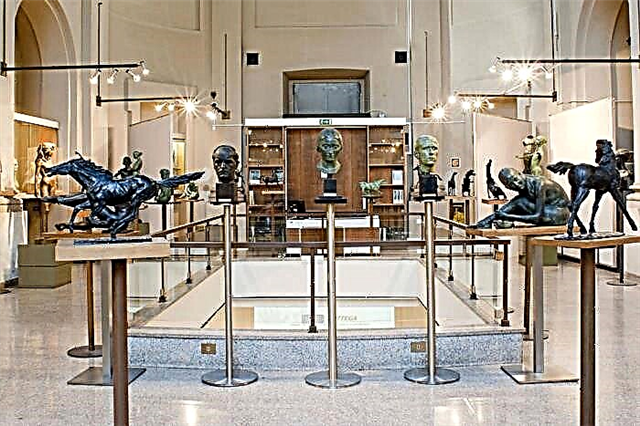
Pinakothek Ambrosiana
It is one of the oldest museums in Milan. The palace of Ambrosius of Mediolansky opened its doors to select visitors in 1618. It contains works of art from the Lombard, Tuscan and Venetian schools. In terms of the number of exhibits, it is second only to the Brera Pinacoteca. A library has been created at the museum, where 700 thousand books are kept. The most valuable copy is Da Vinci's Atlantic Code.
Address: Piazza Pio XI, 2, Milan
Website: ambrosiana.it

House Atellani
The mansion, created in the classic Renaissance style, is located next to the church of Santa Maria delle Grazie. Its halls have "names": zodiacs, Louis, the main staircase. And in the garden there is a vineyard, once founded by da Vinci himself. It was abandoned for several centuries, and now it has been restored according to the old plans of the site. In addition, during the excavations, organic material was found and, by DNA, they recognized the grape variety that Leonardo grew.
Address: Corso Magenta, 65, Milan
Website: vignadileonardo.com

Archaeological Museum of Milan
The building of the museum and the buildings on its territory are also among the exhibits. Archaeological artifacts are kept in the former monastery of San Maurizio Maggiore. The medieval towers and ruins left over from the times of the Roman Empire show how long ago this area was inhabited. Mini-exhibitions are divided into styles, themes, eras. The hall of early music is unusual, and documentaries are shown daily in the cinema bar.
Address: Corso Magenta, 15, Milan
Website: comune.milano.it
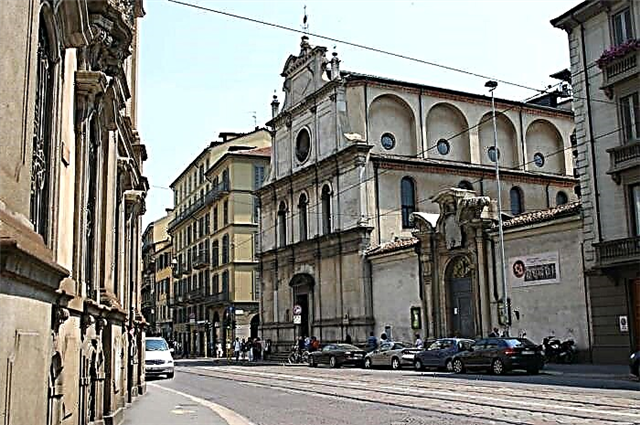
Museum Novecento
The palace on the Piazza del Duomo is home to the Novoccento Museum. It was built during the reign of Mussolini, but later modernized. The building and the art collection follow the same mission - to combine classic style and new trends. In the mind of the creators of the project, these concepts can coexist in close contact. The works of sculptors and futurist artists of the 20th century are the basis of the collection. The audience was admitted to the spacious halls in 2010.
Address: Via Marconi, 1, Milan
Website: museodelnovecento.org

Risorgimento Museum
The main theme of the museum is the unification of Italy. It has existed for over a hundred years, but has moved from time to time. This was due to the hostilities during the Second World War, and with the decision of the authorities to expand the exhibition areas. The museum acquired its current house in Palazzo Moriggia in the 50s of the last century. The last update of the collection was carried out in 1998. Then they added the Armory room and changed the information system.
Address: Via Borgonuovo, 23, Milan
Website: museodelrisorgimento.mi.it

Museum of Cultures (MUDEC)
Since 1990, the workshops of the former mechanical plant have become exhibition halls and workshops. On the territory of the museum, visitors can learn to perceive the world in all its diversity and explore world cultures. There are more than 7 thousand permanent objects in the collection. From time to time they are supplemented by "nomadic" exhibitions. The museum has a theater, library, conference room and cafe with an unusual menu and a live orchestra.
Address: Via Tortona, 56, Milan
Website: mudec.it

House of Alessandro Manzoni
After living in Paris for five years, the writer Manzoni returned to his homeland and bought a house near Piazza Belgioioso. Andrea Campione Boni carried out the restoration work, slightly shifting the emphasis towards the neo-Renaissance. At the time of the writer, the mansion was a haven for many prominent personalities of his time. And after his death, it turned into a full-fledged museum with preserved interiors and an impressive library.
Address: Via Morone, 1, Milan
Website: casadelmanzoni.it

Diocesan Museum
The idea of creating a collection was born in the first half of the last century. However, it was possible to implement it only in 2001. Within the walls of the museum are kept objects of art, directly or indirectly related to religious themes. One of the sections is dedicated to the patron saint of Milan - Saint Ambrose. In another, 4 dozen canvases are presented, clearly demonstrating the stages of development of Italian painting.
Address: Corso di Porta Ticinese, 95, Milan
Website: chiostrisanteustorgio.it

Natural History Museum
One of the classic museums in Milan has been operating since the first half of the nineteenth century, which makes it the oldest in the city. At the beginning of the 20th century, the collection moved to its current building in the square near Porta Venezia. Tourists are waiting for the theory of evolution, acquaintance with the structure of dinosaurs, observation of the reconstruction of different types of natural environment, as well as hundreds of exhibits related to life on Earth at all times.
Address: Corso Venezia, 55, Milan
Site: facebook.com

Milan City Aquarium
Located in the Sempione Park. Built in 1906. From the outside, the building looks atmospheric: a sculpture of Neptune, a fountain at the entrance and stucco work all contribute to creating the right mood. It is spacious inside, there are many information stands, but the main thing is aquariums with marine life. The lighting is mostly dim. The terrace offers scenic views of the courtyard.
Address: Viale Gadio, 2, Milan
Website: acquariocivicomilano.eu

Ulrico Hopely Planetarium
Designed by the architect Jureko Herplili in the gardens of Porta Venezia. The building was built in the early 30s of the last century. In its shape, it resembles an octagon. It is the largest planetarium in Italy. The total number of seats in the main hall is 300. The screen is made in the form of a dome and is decorated with views of the Milanese skyline. The Zeiss IV projector has been in use since the late 60's.
Address: Corso Venezia, 57, Milan
Site: facebook.com




